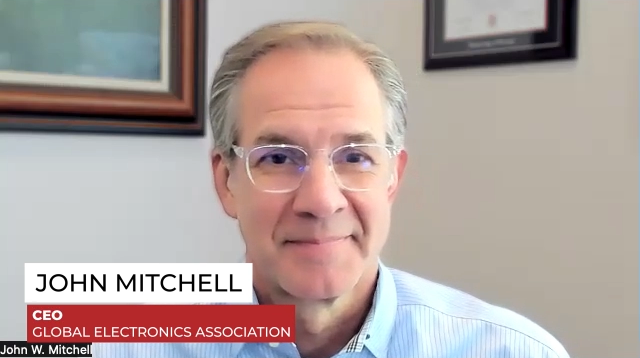
John Mitchell, chief executive officer of the Global Electronics Association, formerly IPC International, explains the cycles of innovation that occur in his industry, and the next big breakthrough.
Many companies are working to bring home a substantial portion of their electronics supply chains, but such efforts won’t be easy to realize. “We estimate it will take around 20 years if you want to [locate] a majority of your electronics ecosystem in a particular country,” Mitchell says.
Over the years, the electronics industry has experienced multiple technological advances, each marking a new era of innovation, from printed circuit boards to integrated circuits, semiconductors and sophisticated storage and graphics capabilities. Driving the next cycle is artificial intelligence, Mitchell says.
Yet the mere existence of new and cutting-edge technology doesn’t guarantee a smooth way forward. Tariffs and other geopolitical developments are promising to slow the next wave of innovation. “Right now,” Mitchell says, “businesses are so frantic, trying to figure out how to get goods where they need to go.” With those concerns at the forefront, “people can’t focus on too many things at the same time.”
None of this should stop electronics companies from focusing on workforce development. “Frankly,” Mitchell says, “we’ve always been in a workforce crisis. The technology is always changing, and the workforce has to constantly adapt.” Even new hires must be constantly upskilled to keep pace.
Jobs on the assembly line for humans are disappearing, to be replaced by a growing need for technicians and engineers. “The level and competency of skills are just constantly increasing,” Mitchell says.
The industry must also be focusing on strategic interdependencies among supply chain partners, with a particular emphasis on developing supply options at every stage of production, he says.